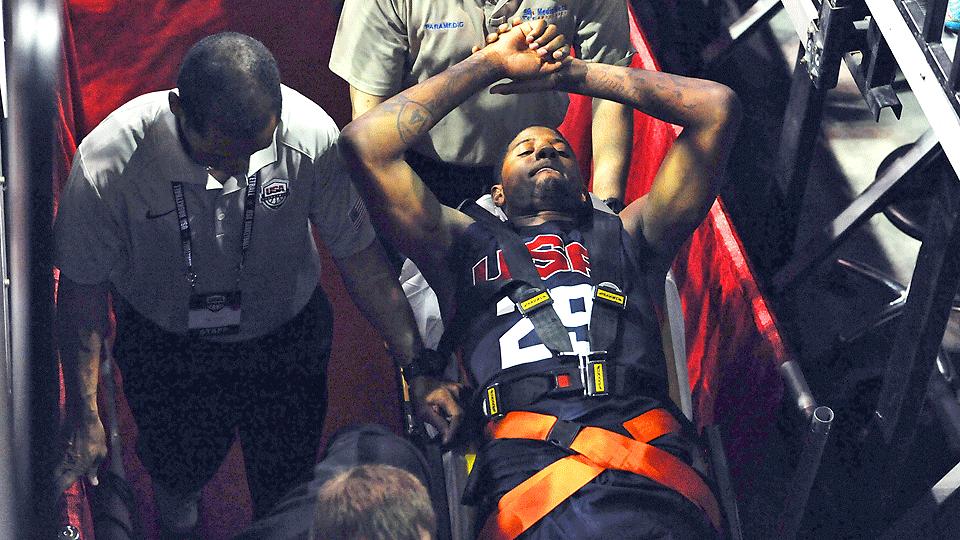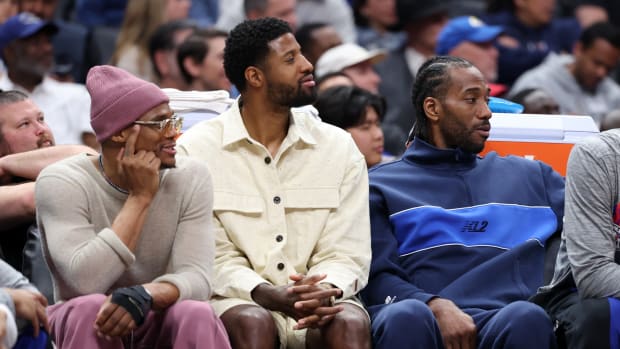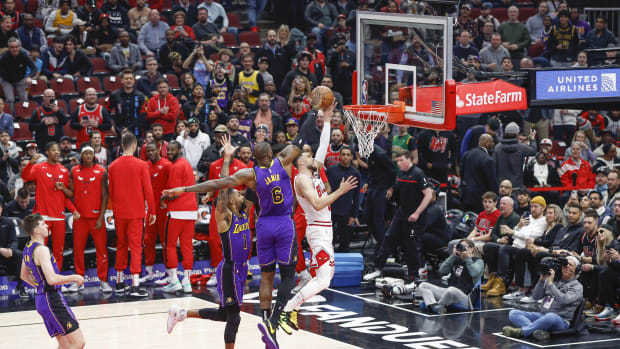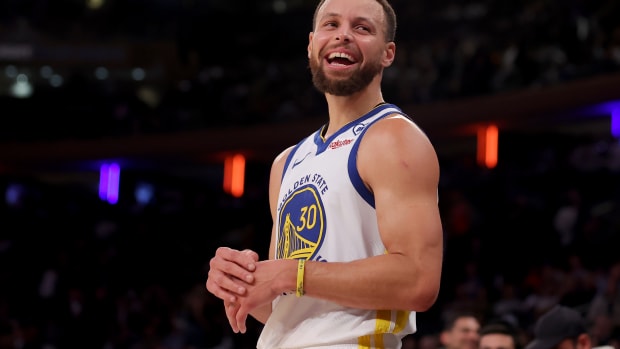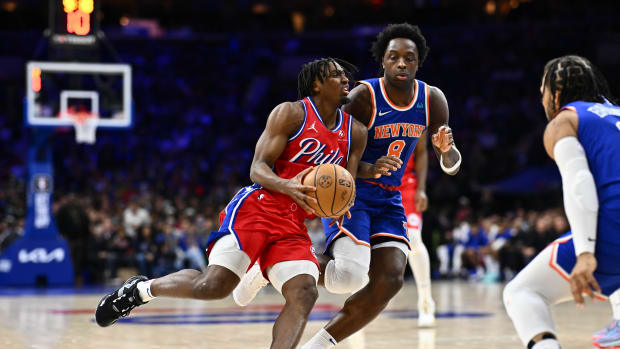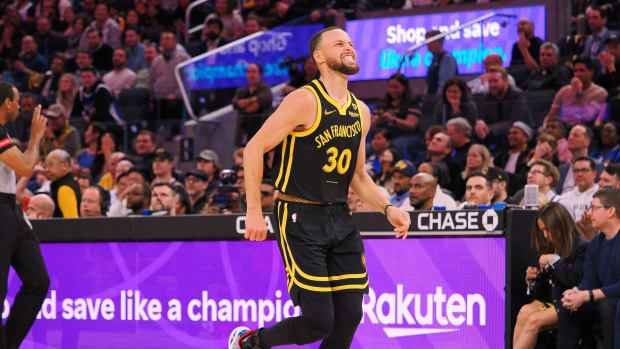In life and basketball, Paul George has long demonstrated his resilience
Paul George’s parents are named Paul and Paulette, a source of mild amusement and great inspiration. George grew up in Palmdale, a desert town one hour north of Los Angeles, where basketball prospects are as rare as blizzards. When he was 10, shooting hoops in his driveway, he heard the scream of an ambulance careening around the corner. He wondered where it was headed. Then he saw his father carrying his mother through the front door of their home.
“We all rushed to the hospital, and that night, the doctors declared her dead,” George said, in an interview last year. “I remember grabbing a blanket and sleeping on the floor next to her bed.” Paulette had suffered a stroke and was diagnosed with two blood clots on her brain. But the doctors were wrong. She remained very much alive.
“It took me two years to be able to walk and talk and see again,” Paulette said. “He watched me fight. I think that experience made a big impact on him. He saw, ‘My mom is really struggling, but she’s not giving up. She’s strong.’” Paulette marveled at the way her only son picked up the household slack and she started calling him Man. The nickname stuck. Family members still call him Man for the toughness he demonstrated as a boy.
George thinks about his mom, now partially paralyzed on her left side, at the best of times: when he’s hanging 40 on the Blazers, when he’s discombobulating LeBron James, when he’s deep in the Eastern Conference Finals. Her example will provide perspective as George begins the long recovery from a compound leg fracture suffered Friday night during a Team USA scrimmage in Las Vegas.
TAYLOR: George's injury shouldn't dissuade stars from joining Team USA
Paul and Paulette were in the stands at UNLV’s Thomas & Mack Center, watching their son chase down James Harden on a fourth-quarter fast break. They saw his right foot land awkwardly against the basket stanchion and rushed to his side. They were with him at the hospital, where he underwent surgery, and tweeted defiantly: “I’ll be ok and be back better than ever!!!”
Unlike many NBA superstars, who were prodigies by 16, George can recall what it’s like to be at square one. He wasn’t invited to join an AAU program until the summer before his senior year of high school, and even then, he was placed on the B team. Fresno State was the only major local college to offer him a scholarship, and in two years with the Bulldogs, he lost more games than he won. He went scoreless as a sophomore against San Jose State. Indiana gambled by drafting him 10th overall in 2010 and head coach Jim O’Brien planted him on the bench. When George predicted at a team dinner that he would be an All Star by his third season, one Pacer laughed.
George was right, and if you conducted a MVP poll this January, he probably would have finished third behind LeBron James and Kevin Durant. He slumped in the second half, along with the Pacers, and finished ninth in the voting. But he still averaged a career-high 21.7 points and made the all-defensive team. He was proof of how NBA players transform themselves in the summer, from benchwarmers to headliners, by working when no one is watching. George creates comprehensive checklists every off-season of skills he plans to burnish: ball-handling, shooting, post-ups. He once told Pacers head coach Frank Vogel he would return from the break a completely different player.
He couldn’t make those strides simply by lifting weights or working in isolation. He had to be on the court, honing his dribble with Jerry Powell in New York or his inside game with Don MacLean in Los Angeles or his stroke with Brian Shaw in Indy. Today’s American stars view the Team USA experience as another step on their path to the elite. They learn from their peers by spending an extended period alongside them. “This is bigger than just basketball,” George proudly told reporters last month. “We’re representing our nation.”
Dialogue will rage all week about whether NBA franchises should allow their high-priced employees to risk injury in international competition. Critics will point to the stanchion at the Thomas & Mack, which appeared slightly closer than on a regulation court. They will draw comparisons to football and baseball, where players stay in shape without plying their trade.
But basketball is different. Hoopers hoop, regardless of time and even conditions. They show up every summer at Rucker Park in New York and the Goodman League in Washington D.C. They join afternoon runs at UCLA and charity exhibitions in North Carolina. When Rockets guard Patrick Beverley was rehabbing a broken hand this season, and thirsting for contact, he crossed the street from the Toyota Center and went skins at Root Memorial Square Park.
During the lockout in 2011, I followed Brandon Jennings through a week of pick-up basketball in L.A. I watched him cross over a 15-year-old in a sweater at Rowley Park and drain a 40-foot fade-away against a 26-year-old businessman at Westchester Rec Center. Jennings wasn’t necessarily expanding his craft, but he was revisiting his roots, and connecting with the constituents who can’t afford courtside seats. “People want to touch you,” he said at the time. “They want to feel you and see how you really are. This is their chance to see us up close.”
If NBA teams ban players from international contests, then the unregulated summer events will also have to go, and so will a part of the league’s streetwise appeal. George won’t be swinging by the Drew League, as he did last month, dropping 33 and throwing down a 360 jam. He also won’t be sparring with Nick Young at a health club in Reseda, as he did as a young player, when a trainer told him: “Paul, I’m going to ask you to dominate, and I wouldn’t ask that if I didn’t think you could.”
Paul George’s year has been ruined by summer basketball. His career, though, has been made by it.






























